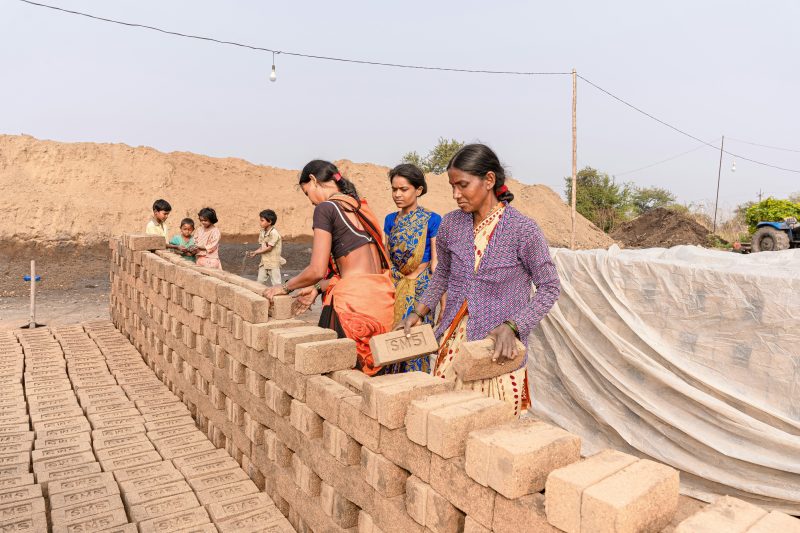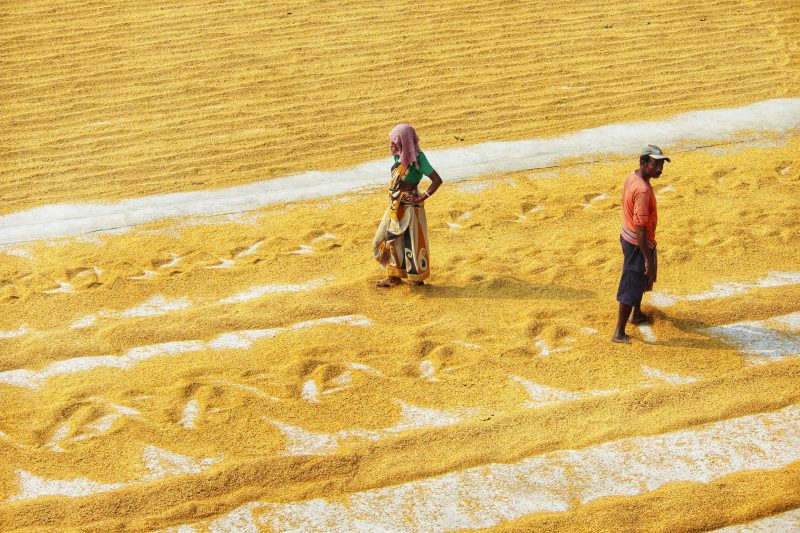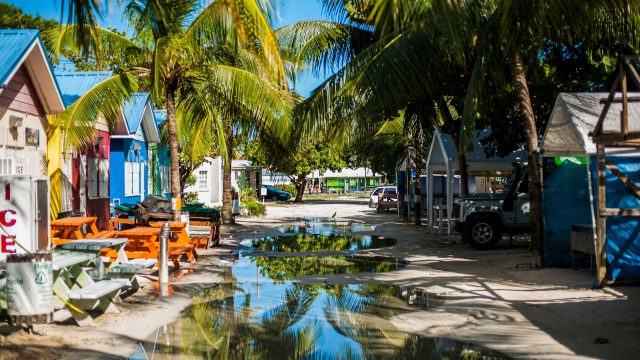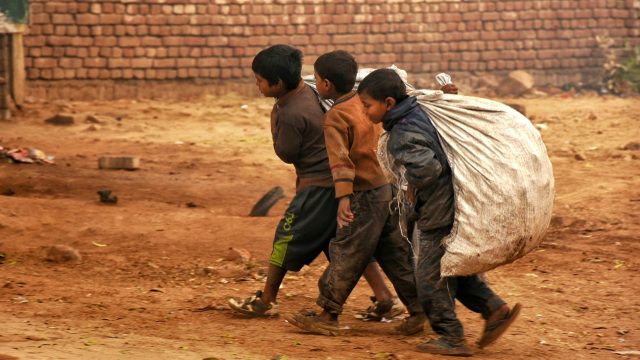Brick by brick: Building up inclusive green enterprises in India
Since 2016, Development Alternatives have been convening dialogues, influencing policy frameworks and enabling access to sustainable finance

As India grapples with urgent environmental challenges and continuous degradation, it must adopt key transitional strategies such as promoting economy-wide decoupling of growth from emissions and developing an effective and innovative low emission industrial system. Within this, Micro, Small, and Medium Enterprises (MSMEs) are vital. MSMEs make up 95% of industry in India, contribute 30% to the country’s GDP, and provide employment for more than 110 million citizens in the country.
Since 2016, the Green Economy Coalition (GEC) has partnered with Development Alternatives (DA) in India through 3 phases to strengthen civil society participation, reform financial systems, and create demand for green policies and practice.
Aspiring entrepreneurs in Bihar have reported that DA’s efforts have been instrumental in advancing cleaner construction materials and the work is an integral part of decision-making at Bihar state level. The third phase recognised that communication and behavioural change, along with policy and finance, is a key component for a green economy transition. A communication guide for CSOs on Nudging Policymakers Towards a Green Economy Transition in India was developed. The guide offers tailored communication and advocacy tools to nudge policymakers in India towards a just and green economy.
These initiatives have enabled convening for integrating sustainability into industrial and economic frameworks, expanded access to sustainable finance, strengthened demand for low-emission and resource-efficient solutions by crafting narratives, communications strategies, and stakeholder engagement tools that promote adoption of clean technologies.
Overview of the initiatives undertaken from 2016 to early 2025
The first phase laid the groundwork for green policy reform in India. The aim was to bridge the gap between local voices and policy decision-making through multi-stakeholder (civil society organisation, financial institutions, government bodies, entrepreneurs and others) dialogues. This not only increased understanding of green economy principles, but also enabled civil society organisations and local stakeholders to advocate for green policy reforms. A flagship output was the Green Barometer Reports which were widely shared with the government and served as policy influencing documents towards the transition to a green economy framework.
The second phase shifted its focus to Local Green Enterprises (LGEs) access to finance, focussing on 3 primary sectors of construction, agriculture, and tourism, across 3 geographies in India - Bihar (Patna), Bundelkhand, Himachal Pradesh (Mandi). This phase identified barriers such as poor credit histories and limited collateral faced by micro-entrepreneurs. To ensure systemic longevity beyond the years of the project, DA convened validation workshops with stakeholders to co-create solutions for these barriers resulting in the development of the ‘Facilitator’s Toolkit for Fly Ash Brick Enterprises’ — a comprehensive and practical resource for navigating financial systems and regulatory processes for MSMEs.
“ The dialogue process created a way to break down barriers and to foster communication between CSOs, MSMEs, policy makers and financiers – in fact forming the first of their kind in the Indian context.”
Paving the way through systemic policy shifts
During the intervention on the construction sector, it was noted that a key contributing factor for pollution were traditional kilns used for producing red brick, of which there is huge demand for in India’s construction industry. Over the years, the national government initiated a policy push to reduce pollution, but implementation towards this has been challenging. In Bihar, the state government was active in reforming the green economy agenda in the construction sector given the high levels of pollution from red brick kilns.
They sought alternative materials for brick making and identified fly ash bricks as a favorable option. Fly ash is a waste product from thermal power plants and currently only 33% of produced fly ash in the state of Bihar is being utilised. However, while the focus was on emission reduction, the enabling conditions for fly-ash brick enterprises seemed overlooked, including the availability of subsidies to support these local enterprises. This is when DA started dialogues with CSOs, small enterprises and the government to accelerate the production of fly-ash bricks in the state, the use of which is now mandated for all government funded infrastructure. DA provided a critical and overarching role of bridge builder.
DA went on to work on improving the investment climate for LGEs and MSMEs through knowledge creation around local green business models and filling gaps in sustainable financing. Imbibing the spirit of inclusiveness, dialogues were organised at subnational, national and regional levels. In Patna, Bundelkhandand Mandi, the focus was on promoting green and inclusive entrepreneurship in agriculture, tourism and construction, providing a vital platform for two way communication between LGEs and financial institutions. The dialogues were significant moments in informing both financiers and civil society and entrepreneurs about the prevalent challenges for green entrepreneurship and initiating a process of policy reform. A Contextual Financial Analysis Report for driving sustainable financial reforms for local green enterprises was developed. It examines the regulatory and financial landscape of LGEs, maps stakeholders and identifies key issues, incorporating feedback from LGEs and offering recommendations for reform and improvements in the LGE sector.

Significantly, a Sustainability Assessment Framework (SAF) was developed by DA as a tool for scaling up LGEs to attract investment. The framework measures their triple-bottom-line performance based on environmental efficiency, local economy contribution and social inclusion. This allows them to track their progress, refine habits and build resilience towards climate change. SAF attempts to generate credible, evidence-based insights which can be shared with financiers and decision makers, to demonstrate the value of LGEs. SAF aims to provide LGEs as the backbone of a green and inclusive economy. The framework continues to identify investable green enterprises.
A policy journey powering green growth
Positive policy shifts iIn Bihar, saw the Department of Building & Construction mandating that at least 50% fly ash bricks must be used for construction projects if they are located within a specified radius of a coal-based power plant. This was reinforced in 2018 when state orders were passed in Bihar to prohibit any new brick kiln construction units and directed the existing ones to use new, cleaner technology, a positive shift towards enshrining sustainable construction practices. Additionally, the Bihar Pollution Control Board began to focus on enhancing the quality of fly ash bricks, pushing the green agenda into regulatory oversight. The changes in state level mandates and institutional practices has influenced conversations, focus and mindsets of decision-makers and has laid the groundwork for substantive legislative outcomes to transpire.
Conclusion
A consolidated look at the development of the Green Economy initiatives within DA, suggests a sequenced and progressive journey, from dialogues to policy frameworks, enabling sustainable finance access and shaping tailored narratives and behaviours. The dialogue process created a way to break down barriers and to foster communication between CSOs, MSMEs, policy makers and financiers – in fact forming the first of their kind in the Indian context. The confidence of CSOs increased in advocating for green policy reforms, entrepreneurs reported increased business knowledge on agriculture, tourism and construction and financiers acknowledged improved clarity on the challenges faced by local enterprises.
While challenges remain, the GEC - DA partnership allows for local perspectives and voices to be heard on the agenda for policy making at national and sub-national levels. It facilitated and expanded civil society participation in financial reform dialogues and ensured financial mechanisms were inclusive, locally responsive and sustainably focussed. On the whole, it has created an environment where collaboration and participation drive the need for green inclusive practices and policies.
- Zaiza Khan, Drishika Sharma & Swayam Prabha Das


